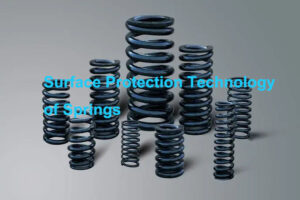Surface protection process of spring
 The surface protection process of spring mainly includes: surface rust prevention in process, blackening (bluing) of finished products, phosphating, anti-rust oil on paint, electro-coating paint, electroplating, electrostatic powder spraying, etc. The last four surface treatment processes are widely used and developed.
The surface protection process of spring mainly includes: surface rust prevention in process, blackening (bluing) of finished products, phosphating, anti-rust oil on paint, electro-coating paint, electroplating, electrostatic powder spraying, etc. The last four surface treatment processes are widely used and developed.
The corrosion resistance of some stainless steel wires and important carbon spring steel wires is equivalent to the corrosion resistance of galvanizing. If another layer of ZnAl (5%) alloy is coated, the corrosion resistance can be increased by about 3 times.
For stainless steel wire or carbon spring wire for important purposes with a diameter less than 0.4mm, the wire can be copper-plated; for wire with a diameter more than 0.4mm, the wire can be made of copper inside and stainless steel outside. Ordinary steel wire plating 5 μ M thick Ni improves its conductivity.
In general, processes that harden the surface of a material to create residual stresses, such as shot peening and surface nitriding, improve fatigue strength. At present, non-electrolytic Ni plating is under research. 7% of P can be separated out as PNi by heating at 300-500 ℃, which can improve Vickers hardness by 500HV. After shot blasting, if Ni plating is heated below 300 ℃, the hardness can also be increased by 10%.
Dqcromet coating technology has many advantages, such as no hydrogen embrittlement, high corrosion resistance, high temperature resistance, high permeability, strong adhesion and good environmental protection performance. It has been used at present, but attention shall be paid to quality.
With the development of the information age, the spring industry has established some related websites, including 888 spring network, playing a certain role in information dissemination and communication technology.






